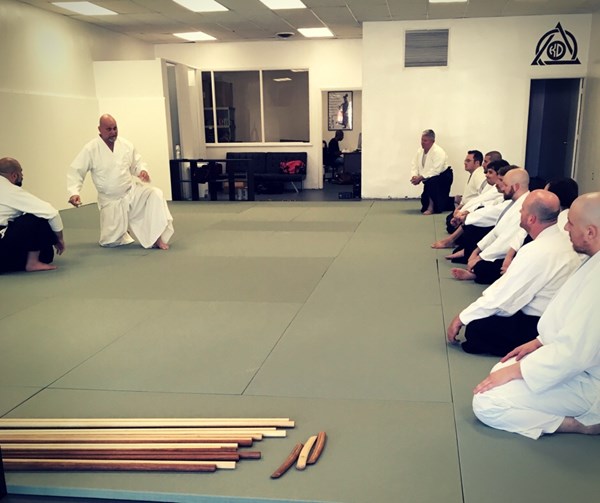4/25/2018

In our fast-paced results-driven lives, it is easy to look at an activity like martial art training from a perspective of what is immediate and explicitly practical. However, the benefits offered by martial art training go much deeper than what can be perceived on the surface, even if immediately practical goals such as self defense application, a greater level of fitness, or success in competition are quite desirable outcomes in and of themselves. Looking at something as simple as the bowing commonly found in traditional Japanese martial arts, we can see that there is a lot more going on than meets the eye. Hidden within this seemingly simple gesture of respect, are concepts of attention, attitude, spacing, and posture that offer deep and meaningful lessons for human interaction and go well beyond the immediate, tangible, and measurable.
When performed properly, the bow between two practitioners of a traditional Japanese martial art is not only a symbol of respect. It is also an expression of agreement to sharply focus on the task at hand, a task representing life and death and undertaken for the mutual betterment of both participants. The bow is subtle, not ostentatious, expressing both courtesy and humility, but also the attitude that the person and the acts that follow are all in the world that matter at that moment. This attitude of focused awareness on the other person, as if to say “I see you and I am here for you in this moment,” is something greatly lacking in today’s environment of endless distractions and the constant pulling of our attention away from human connection.
Even the spacing and postures of the bow are intentional, consciously formed acts. In every human interaction, there is a distance and shape between people that, for lack of a better phrase, just feels right. Too close is invasive. Too far away is standoffish. Too slouched feels apathetic. Too upright feels uptight and awkward. In Japanese traditional martial arts, knowing and feeling the perfect spacing and posture or stance for an engagement or interaction begins with the bow and changes depending on the training circumstance. If these subtle lessons are allowed to be internalized, the seemingly simple bow becomes a metaphor for how to best present oneself to others such to create a more harmonious engagement with more desirable outcomes for all involved.
Many modern martial arts mirror our lives, with immediacy of result being the primary concern. There is nothing wrong with that. In fact, martial arts that offer easy to learn self defense tactics and skills serve a high and noble purpose in a world that often feels more violent every day. The same should be said for martial arts that focus on bringing practitioners up to peak levels of physical fitness and performance ability. In a culture of fast food consumption and Netflix binging, physical activity of any kind is becoming ever more valuable and vital. Traditional martial arts do not replace or override these concerns. Instead, a traditional martial art should serve to enhance and inform the life of the practitioner in such a way that he or she is changed from the inside out by it, so that every other activity and engagement are made that much more meaningful, from a simple bow to a friendship or a marriage.